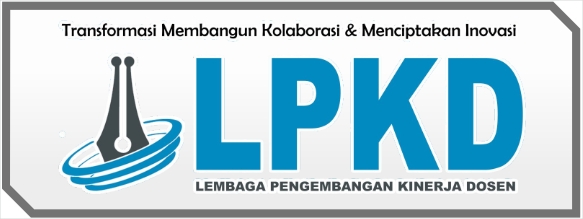KORELASI ANTARA PARITAS DENGAN KEJADIAN PERDARAHAN POSTPARTUM PRIMER
DOI:
https://doi.org/10.55606/klinik.v1i2.646Keywords:
parity, bleeding, primary postpartum hemorrhageAbstract
This study aims to determine the correlation between parity and the incidence of primary postpartum hemorrhage. The research design used is a cross-sectional correlation design. This study was conducted at the Public Health Center (Puskesmas) in Pulau Untung Jawa Village, Kepulauan Seribu Selatan District, DKI Jakarta in 2021. The population in this study was mothers who experienced postpartum hemorrhage (500 ml/more) at gestational age ≥ 20 weeks in the first 24 hours after delivery. The sampling technique used in this study was saturated sampling. The data were analyzed using the Chi-squared test. From the results of the study, it was found that 29 cases of primary postpartum hemorrhage occurred. Most incidences of primary postpartum hemorrhage occurred at a high parity level (more than 1) as many as 20 cases (68.97%). After analyzing the data using the Chi-squared test based on dk = 1 and α = 0.05, the Chi-square table = 3.48 while the calculated Chi-square count = 4.16. The conclusion is obtained by comparing X² count with X² table, it is found that X² count is > X² table, which means that there is a correlation between parity and the incidence of primary postpartum hemorrhage. It means that women with high parity have a greater risk of experiencing primary postpartum hemorrhage. With the high incidence of primary postpartum hemorrhage at high parity, it is hoped that healthcare facilities can provide more intensive services. Preventive measures should be started since women are pregnant by doing good antenatal care, providing information about the occurrence of primary postpartum hemorrhage and paying attention to predisposing factors or history of primary postpartum hemorrhage.
References
[2] WHO, “WHO and UNICEF warn of a decline in vaccinations during COVID-19,” Who, vol. 41, no. 8. 2020.
[3] D. K. Cahyaningtyas, S. Mardiyah WD, and E. D. Rospia, “Penatalaksanaan Perdarahan Postpartum di Negara Berkembang,” J. Cent. Res. Publ. Midwifery Nurs., vol. 5, no. 2, 2021, doi: 10.36474/caring.v5i2.202.
[4] KemenKes, Laporan Riskesdas 2018. Jakarta: Kementerian Kesehatan RI, 2019.
[5] L. Pan et al., “Pregnancy outcomes of Chinese women with gestational diabetes mellitus defined by the IADPSG’s but not by the 1999 WHO’s criteria,” Clin. Endocrinol. (Oxf)., vol. 83, no. 5, 2015, doi: 10.1111/cen.12801.
[6] Kemenkes, “Manajemen Mutu Informasi Kesehatan 1: Quality Assurance,” 2017.
[7] L. Simanjuntak, “PERDARAHAN POSTPARTUM (PERDARAHAN PASKASALIN),” J. Visi Eksakta, vol. 1, no. 1, 2020, doi: 10.51622/eksakta.v1i1.51.
[8] F. Rachmania and L. Zakiah, “Faktor- Faktor yang Mempengaruhi Ibu Nifas tentang Perdarahan Postpartum,” J. Ilm. Kebidanan Indones., vol. 9, no. 04, 2020, doi: 10.33221/jiki.v9i04.417.
[9] R. Intan Fitriyani, E. Sukmawati, D. Arief Rantauni, P. DIII Kebidanan, and Stik. Serulingmas Cilacap, “CASE STUDY: MIDWIFE CARE ON Mrs. E TRIMESTER III PREGNANCY, LABOR, NIFAS, NEONATUS AND FAMILY PLANNING,” vol. 3, 2022, [Online]. Available: http://ejurnal.stie-trianandra.ac.id/index.php/klinikHalamanUTAMAJurnal:http://ejurnal.stie-trianandra.ac.id/index.php.
[10] E. S. Yuli Sya’baniah Khomsah, “Pengetahuan, Sikap Ibu, Sarana Kesehatan dan Sikap Petugas Kesehatan tentang Pemerikaan Kehamilan Selama Masa Pandemi Covid-19 terhadap Perilaku Kunjungan Pemeriksaan Kehamilan,” J. Bidan Komunitas, vol. 1, no. 5, pp. 42–50, 2022.
[11] D. N. Mustika, S. Nurjanah, and Y. N. S. Ulvie, Buku Ajar Asuhan Kebidanan Nifas. 2018.
[12] Prasetyono, Buku Ajar Asuhan Kehamilan, vol. 4, no. 3. 2017.
[13] N. A. Khasanah and W. Sulistyawati, BUKU AJAR NIFAS DAN MENYUSUI. 2017.
[14] E. Fitriahadi and I. Utami, ASUHAN PERSALINAN & MANAGEMEN NYERI PERSALINAN. 2019.
[15] Sugiyono, Metode Penelitian Kuantitatif, Kualitatif, dan R&D, 1st ed. Bandung: Penerbit Alfabeta, 2019.
[16] Sugiyono, metode penelitian kualntitaltif, kuallitaltif,daln R&D. Jakarta: Alfabeta, 2017.
[17] Sukmawati E, wahyunita yulia sari, and indah sulistyoningrum, Farmakologi Kebidanan. Trans Info Media (TIM), 2018.
[18] E. Sukmawati, “PENGARUH MORINGA OLEIFERA TERHADAP PENINGKATAN ASI PADA IBU MENYUSUI,” JIKA, vol. 4, 2019.
[19] S. Tri Aksari, Y. Sya, E. Sukmawati, P. DIII Kebidanan, and S. Serulingmas, “ASUHAN KEBIDANAN PADA Ny.H MASA KEHAMILAN TRIMESTER III, PERSALINAN, NIFAS, NEONATUS DAN KELUARGA BERENCANA DI PUSKESMAS MAOS MIDWIFE CARE ON Mrs. H TRIMESTER III PREGNANCY, LABOR, PARTNERSHIP, NEONATUS AND FAMILY PLANNING AT MAOS PUSKESMAS,” vol. 3, 2022, [Online]. Available: http://ejurnal.stie-trianandra.ac.id/index.php/klinikHalamanUTAMAJurnal:http://ejurnal.stie-trianandra.ac.id/index.php.
[20] W. H. Organization, “Report of the WHO-China joint mission on Coronavirus Disease 2019 (COVID-19),” WHO-China Jt Mission Coronavirus Dis 2019.2020, 2019. .
[21] KEMENKES RI, Profil Kesehatan Indonesia 2020. 2021.
[22] E. Sukmawati, N. D. N. Imanah, and P. Suwariyah, “Pengaruh Pendampingan Kader Kesehatan terhadap Keberhasilan Menyusui untuk Memberikan ASI Eksklusif,” J. Kebidanan Indones., vol. 12, no. 2, 2021.
[23] N. Silvia, N. Didik Nur Imanah, Y. Sya, E. Sukmawati, P. DIII Kebidanan, and S. Serulingmas, “CASE STUDY: MIDWIFE CARE ON MY WHILE TRIMESTER III PREGNANCY, LABOR, NIFAS, NEONATES, AND FAMILY PLANNING,” no. 2, 2022, [Online]. Available: http://ejurnal.stie-trianandra.ac.id/index.php/klinikHalamanUTAMAJurnal:http://ejurnal.stie-trianandra.ac.id/index.php.


















